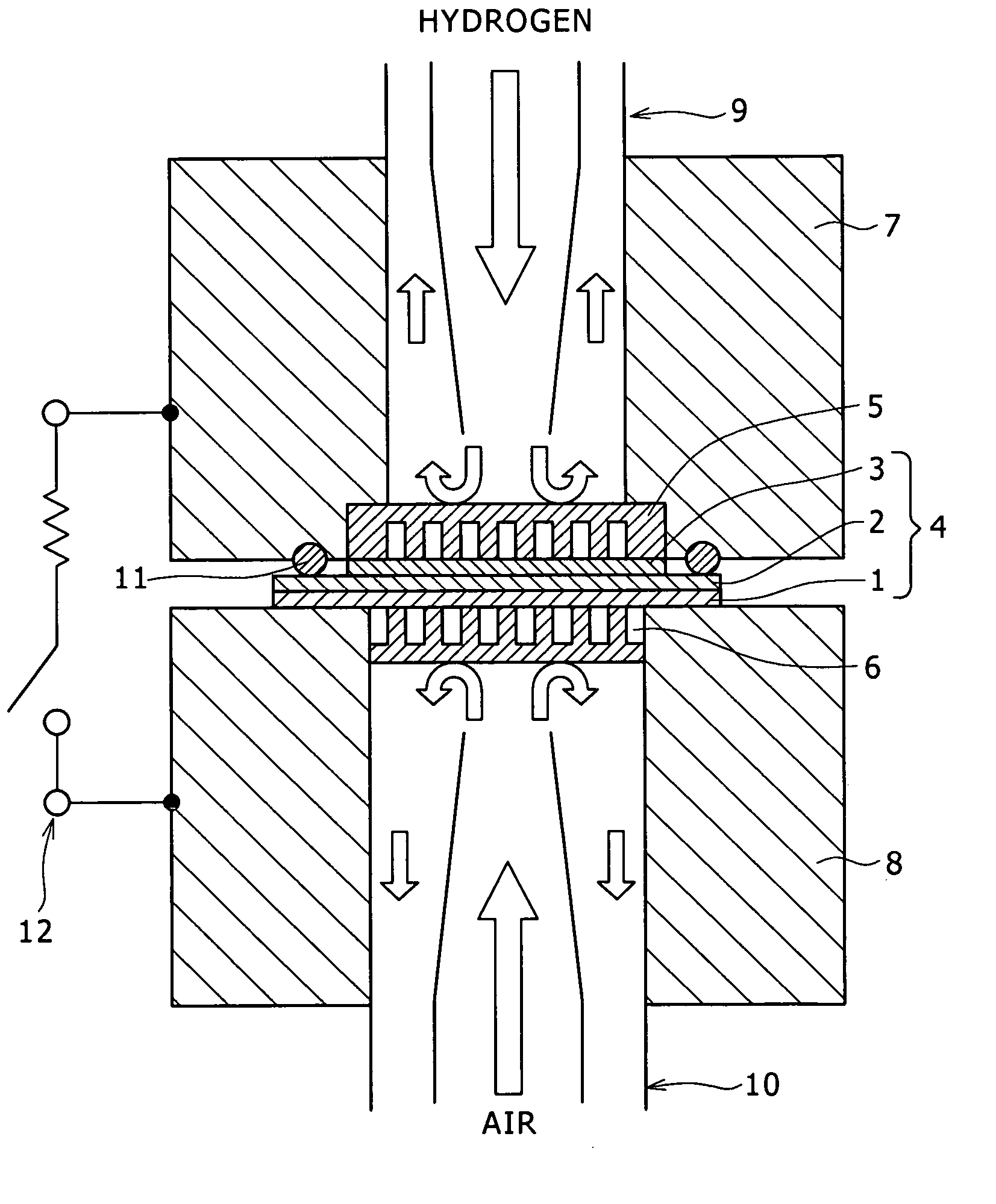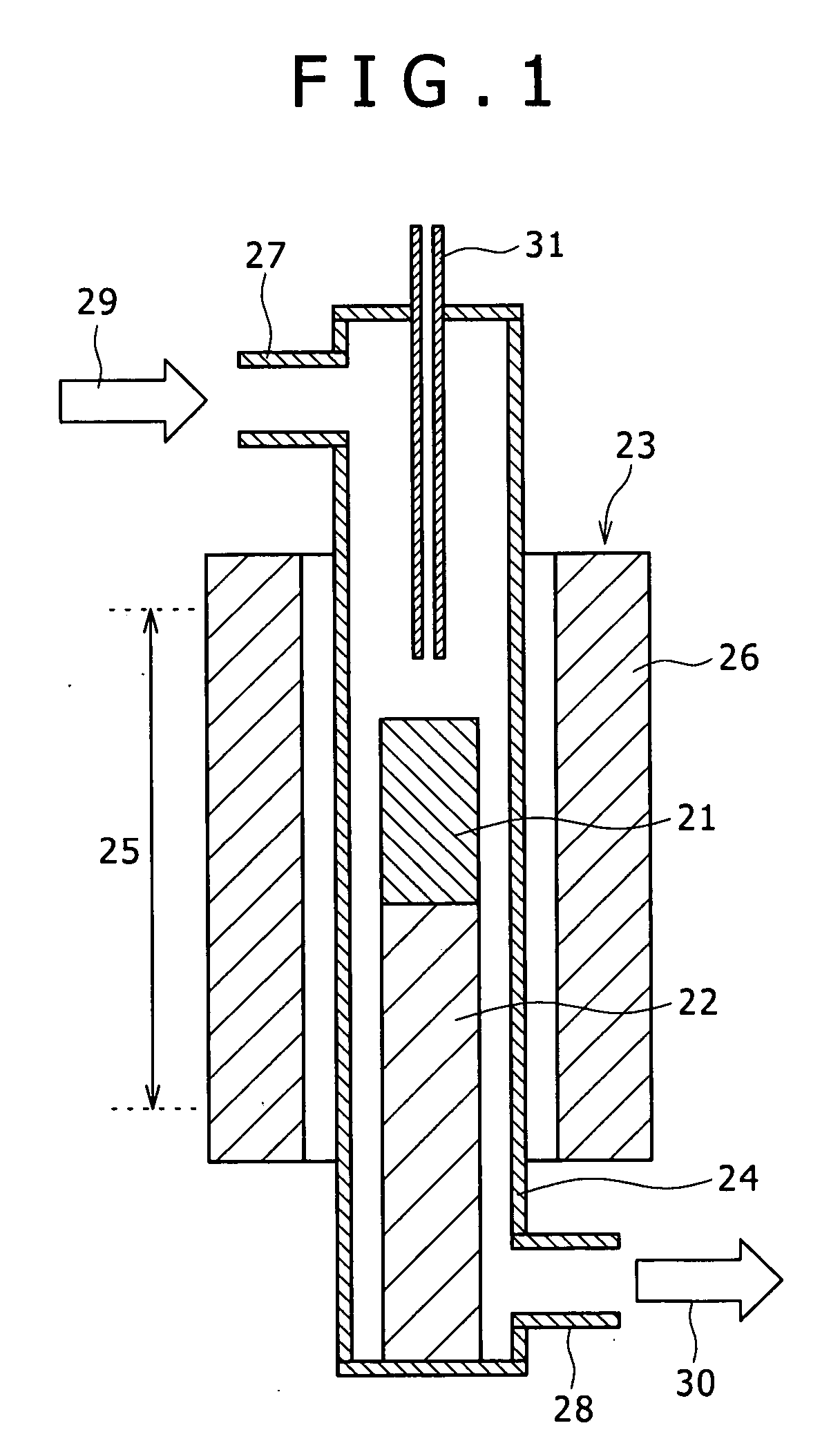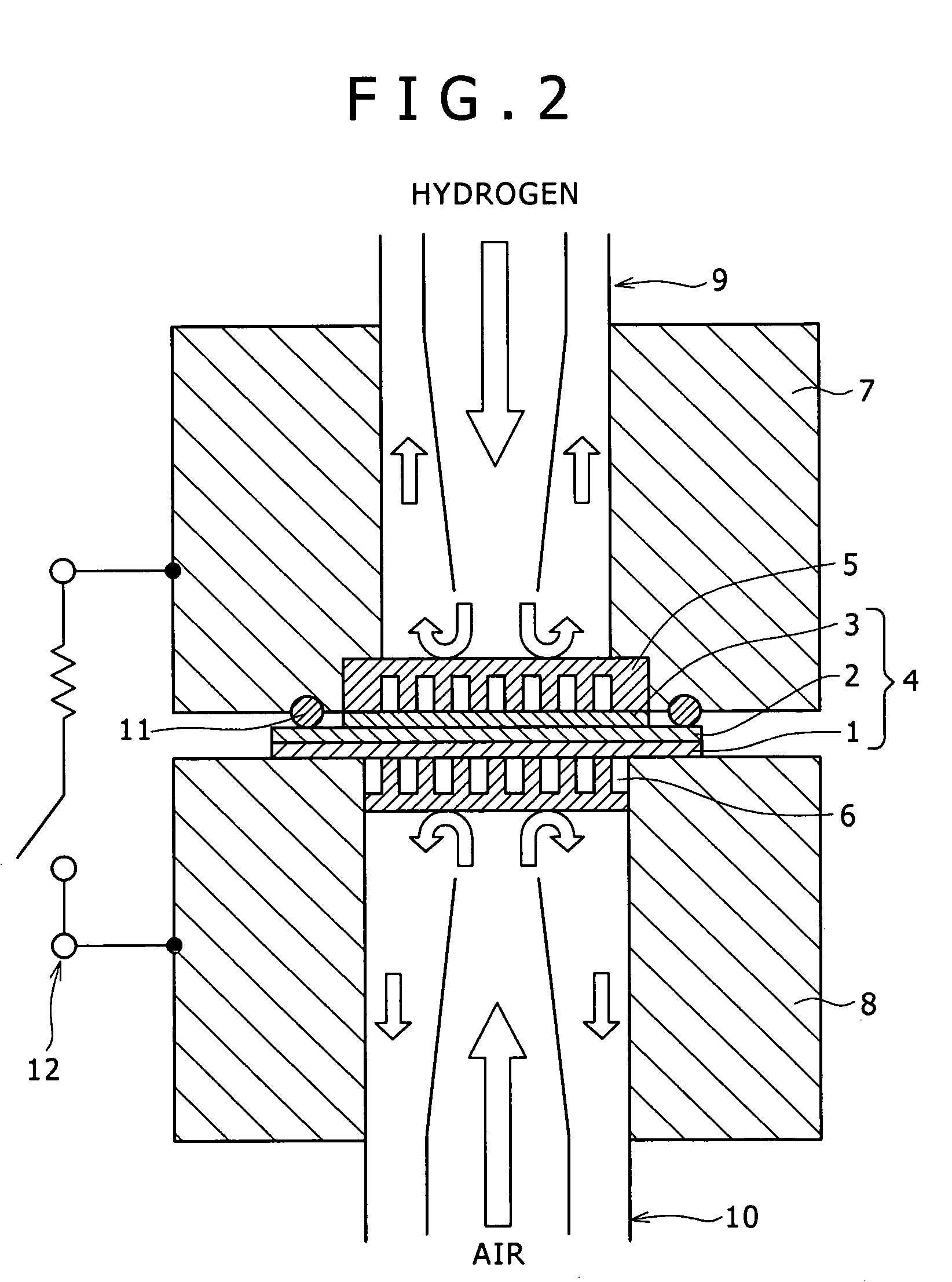Catalyst and process for producing the same, catalytic electrode and process for producing the same, membrane/electrode union, and electrochemical device
a catalyst electrode and electrochemical technology, applied in the direction of organic compound/hydride/coordination complex catalysts, physical/chemical process catalysts, cell components, etc., can solve the problem of not being able to form a thick catalyst layer, the method is not suited to the formation of thick catalyst layers, and the catalytic performance of the nitrogen-containing activated carbon catalyst is not high as compared with that of platinum-based catalysts, etc. problem, to achieve the effect of sufficient catalyti
- Summary
- Abstract
- Description
- Claims
- Application Information
AI Technical Summary
Benefits of technology
Problems solved by technology
Method used
Image
Examples
first embodiment
[0056] The catalyst according to the present invention is preferably an oxygen reduction catalyst for accelerating the reaction of the following formula:
O2+4H++4e−→2H2O,
Comprised of a material which contains at least carbon and nitrogen as indispensable component elements and in which the presence ratio of carbon relating to a shake-up process at the surface thereof is controlled.
[0057] In addition, the material preferably such that, in measurement of electron spin resonance, the above-mentioned first unpaired electrons show Pauli paramagnetism, and the above-mentioned second unpaired electrons show Curie paramagnetism. As will be detailed in Examples later, the unpaired electrons showing Pauli paramagnetism are unpaired electrons occupying the conduction band and showing delocalization, while the unpaired electrons showing Curie paramagnetism are unpaired electrons localized into a fixed location in the molecule. It is considered that, in the catalyst according to the present i...
examples of first embodiment
[0078] Now, preferred examples according to the first embodiment of the present invention will be described in detail below.
[0079] In the following, examples in which a nitrogen-containing active carbide catalyst is synthesized by using coal-derived binder pitch as the carbonaceous solid raw material and using melamine as the nitrogen-containing organic compound, and a fuel cell is produced by use of the catalyst, will be described.
Example 1
[0080] Coal-derived binder pitch and melamine were weighed in a mass ratio of 95:5, and ground and mixed in a mortar to obtain 4 g of a powder, which was put in the specimen tube 21, and the specimen tube 21 was set in the above-mentioned synthesizing apparatus. Baking was conducted in a high-purity nitrogen gas stream by raising temperature from normal temperature to 1000° C. at a temperature rising rate of 5° C. / min, and the temperature was then maintained at 1000° C. for 1 hr. During the period of 1 hr, steam activation was also conducted. ...
second embodiment
[0132] In a second embodiment of the present invention, it is preferable that a conductive material is added to the nitrogen-containing carbonaceous catalyst for accelerating an oxygen-reducing reaction of the following formula:
O2+4H++4e−→2H2O
and the hydrogen ion conductive polymer material, to produce the powdery mixture, and the powdery mixture is formed to produce the catalyst electrode. The conductivity of the catalyst electrode has been secured by the conductivity of the carbonaceous material, but it can be further enhanced by the addition of the conductive material.
[0133] Besides, it is preferable to use a perfluorosulfonic acid-based resin as the hydrogen ion conductive polymer material. The perfluorosulfonic acid-based resin is chemically stable, and is therefore preferable. In addition, in the case of applying the catalyst electrode to the oxygen electrode in a fuel cell or the like such as PEFC, a perfluorosulfonic acid-based resin membrane is ordinarily used as a poly...
PUM
| Property | Measurement | Unit |
|---|---|---|
| bonding energy | aaaaa | aaaaa |
| temperature | aaaaa | aaaaa |
| pressure | aaaaa | aaaaa |
Abstract
Description
Claims
Application Information
 Login to View More
Login to View More - R&D
- Intellectual Property
- Life Sciences
- Materials
- Tech Scout
- Unparalleled Data Quality
- Higher Quality Content
- 60% Fewer Hallucinations
Browse by: Latest US Patents, China's latest patents, Technical Efficacy Thesaurus, Application Domain, Technology Topic, Popular Technical Reports.
© 2025 PatSnap. All rights reserved.Legal|Privacy policy|Modern Slavery Act Transparency Statement|Sitemap|About US| Contact US: help@patsnap.com



